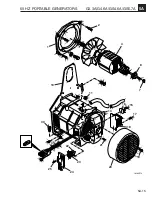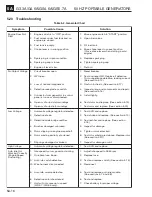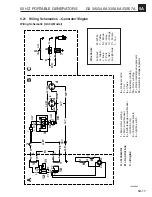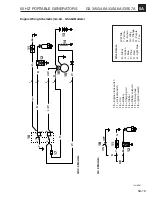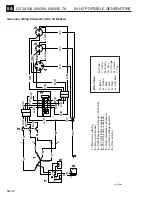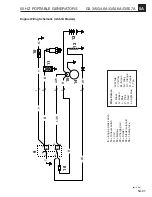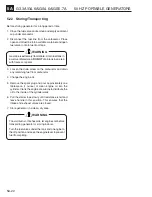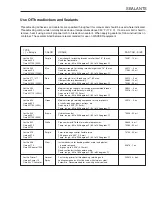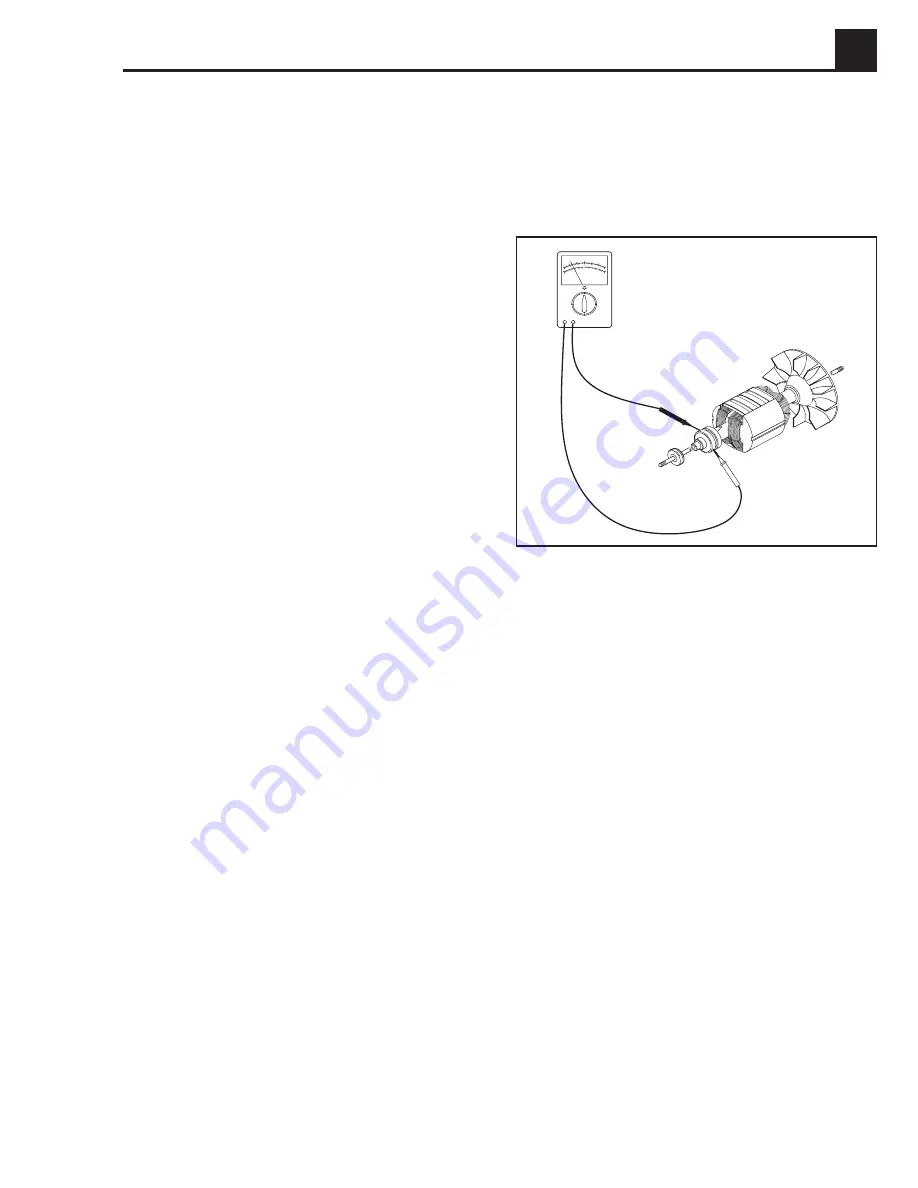
5A-11
50 HZ PORTABLE GENERATORS
G3.3A/G4.6A/GS4.6A/GS5.7A
5A
5.15 Rotor Windings
Before testing rotor, visually inspect windings for dark
streaks which indicate a burned or shorted winding.
Rotate ball bearing by hand. Replace it if it is rough, noisy
or dry.
Checking Rotor
1. Remove end cover and brush assembly.
2. Measure resistance as shown in the illustration, by
measuring the winding at the slip rings. See Figure
5-15.
3. Record resistance values of both windings and
compare them with values listed in Table 5-1.
4. Check for grounded windings by holding one meter
lead to winding and other lead to metal frame on rotor.
Replace rotor if windings are open, shorted internally or
shorted to metal frame.
5.16 Slip Rings and Brushes
Slip Rings
Inspect the slip rings for dirt or damage. If the slip rings
are dirty, use an eraser or non-metallic abrasive pad to
clean the rings and then retry the generator.
Brushes
Inspect the brushes for damage, dirt, freedom of
movement, or brush length. Brushes less than 8 mm in
length should be replaced. Also replace damaged
brushes.
5.17 Automatic Voltage Regulator
To check the regulator:
•
If the generator has low voltage, approximately 2 – 5
VAC as measured at the 120 VAC receptacles,
remove F1 and F2 from the regulator. Start and run
the generator. If voltage output is approximately 150
VAC measured at the receptacles and engine speed
is 3750 rpm, replace regulator.
•
If the generator has low voltage, approximately 65
VAC measured at the 120 VAC receptacles, remove
F1 and F2 from the regulator. Start and run the
generator. If voltage output is approximately 150
VAC measured at the receptacles, and engine speed
is 3750 rpm, replace regulator.
•
If the generator has high voltage, approximately 150
VAC as measured at the 120 VAC receptacles, and
the engine speed is 3750 rpm, replace regulator.
Figure 5-15. Checking Rotor
1024SD02



















